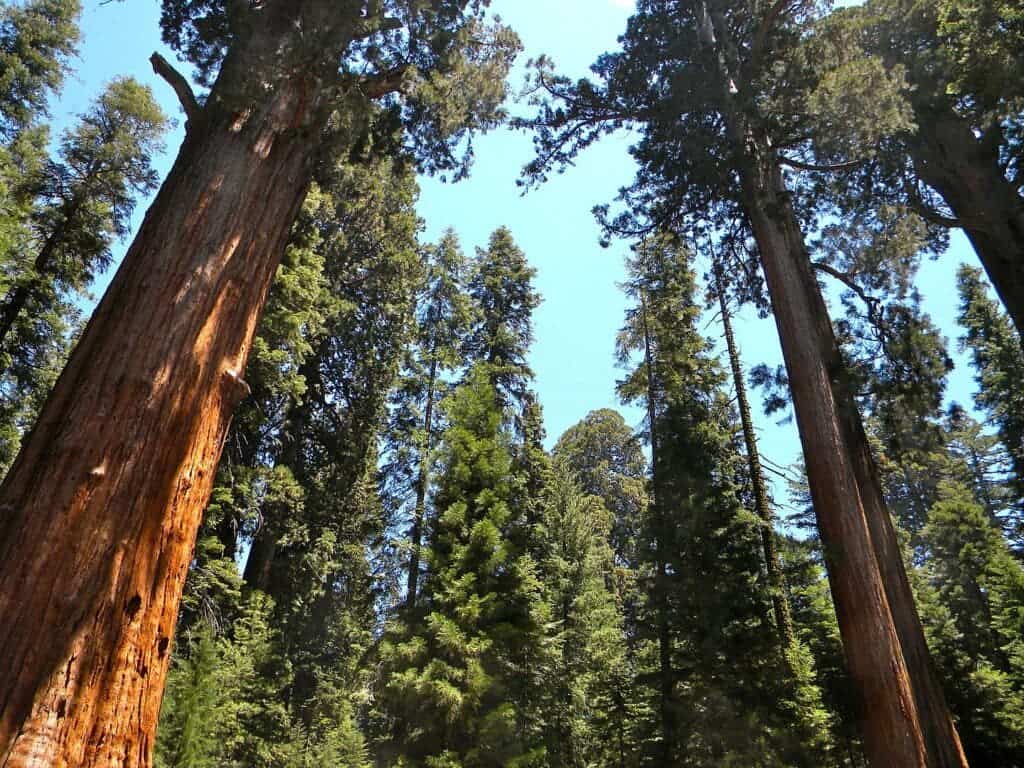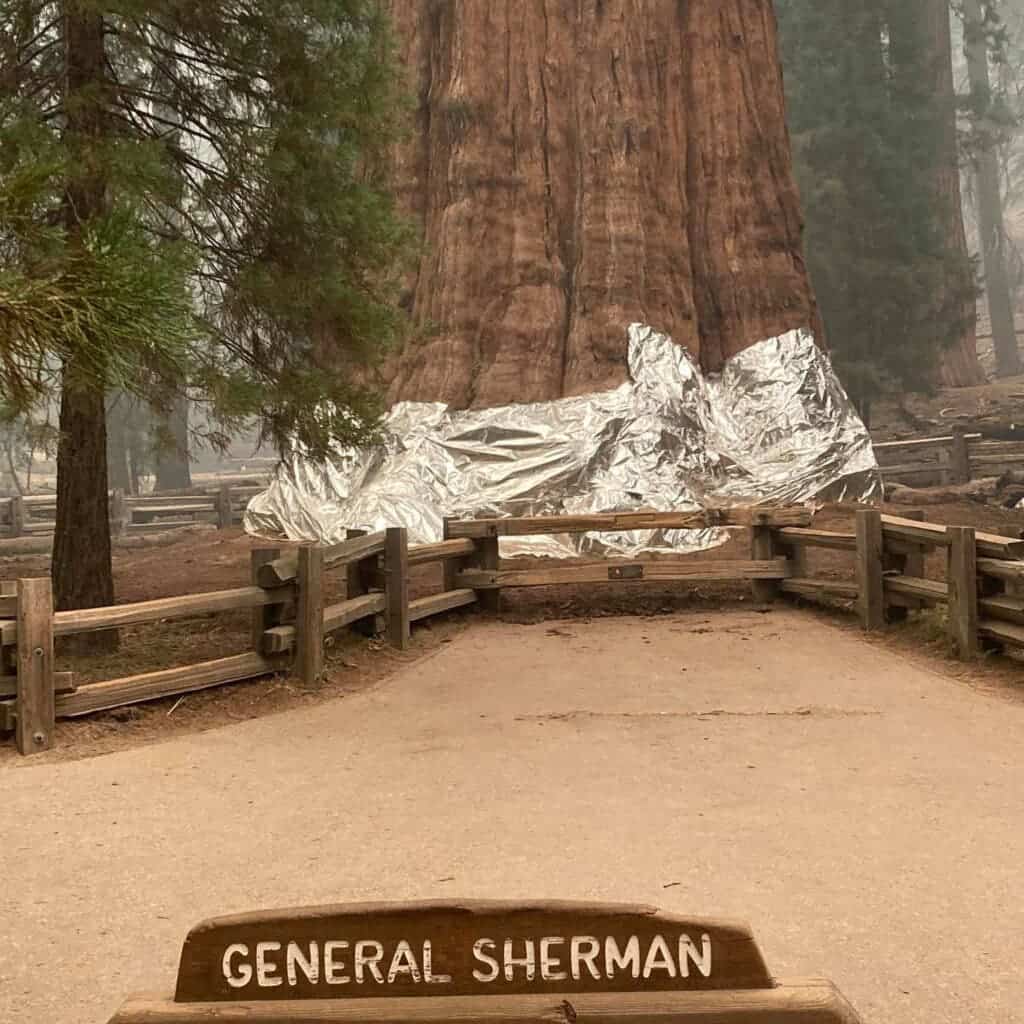As flames approach the massive trees in the Sequoia National Park in California, firefighters are looking at different strategies to prevent them from being affected – including wrapping them with fire-resistant blankets. The forest has more than 2,000 sequoias, including General Sherman — the biggest tree by volume on the planet.

More than 350 firefighters, helicopters, and water-dropping planes are currently battling the blazes, which are expected to the forest in a matter of hours. They have already wrapped General Sherman, some other sequoias, the Giant Forest Museum as well as other buildings as protection against the possible flames.
The fires are sadly no news for the state of California, which so far this year has seen 2.2 million acres affected by 7,4000 wildfires. These are driven by extreme drought and higher temperatures, both influenced by the climate crisis. A warmer world increases the chances of having dry and hot weather that then leads to wildfires.
“It’s a very significant area for many, many people, so a lot of special effort is going into protecting this grove,” Sequoia and Kings Canyon National Parks spokesperson Rebecca Paterson told the LA Times. “Certain notable giants, including the General Sherman, “are being prepped the same way that we would prep structures.”
Wrapping up
The firefighters first clear the vegetation around the trees and then place an aluminum wrapping around their bases. These are intended to shield the trees from raining embers and also reflect radiant heat. It’s the same material that firefighters always carry in case there’s a burn-over, as it can tolerate intensive heat for short periods.

Paterson said they have used this material for many years across the West of the US to protect certain structures from flames. In fact, in a recent fire in Lake Tahoe, some homes were wrapped with the material and could survive the flames. For sequoias, the aluminum adds another layer to the natural protection against fires they already have.
Fortunately, these are trees that are well adapted to tolerate wildfire. They even leverage it to reproduce, as flames heat their cones to release seeds. But as fires get more intense due to drought and climate change, the sequoias aren’t as protected as before. Last year, 10% of the giant sequoia population was wiped out due to the feracious blaze.
But there’s still reason for optimism. The area where the sequoias area has been subject to prescribed burns several times, a tactic that clears the understory and overgrowth that acts as fuel for the fires. “Of all the things that affect fire behavior, the fuels is really where we can take action,” Maureen Kennedy, a professor of wildfire ecology, told AP.
Park employees and residents have already been evacuated, with the park closed down to the public. The Colony Fire, one of the two currently burning near the park, could reach the 2,000 sequoia trees on the next few days, firefighters predict. Meanwhile, the Paradise Fire, is moving close to the park headquarters.
The General Sherman Tree is considered the largest tree in the world by volume, with 1,487 cubic meters or 52,508 cubic feet, according to the US National Park Service. It is 84 meters high, or 275 feet, and has a circumference of 31 meters, or 103 feet, at ground level. A quite remarkable tree worth preserving with as many blankets it takes.









